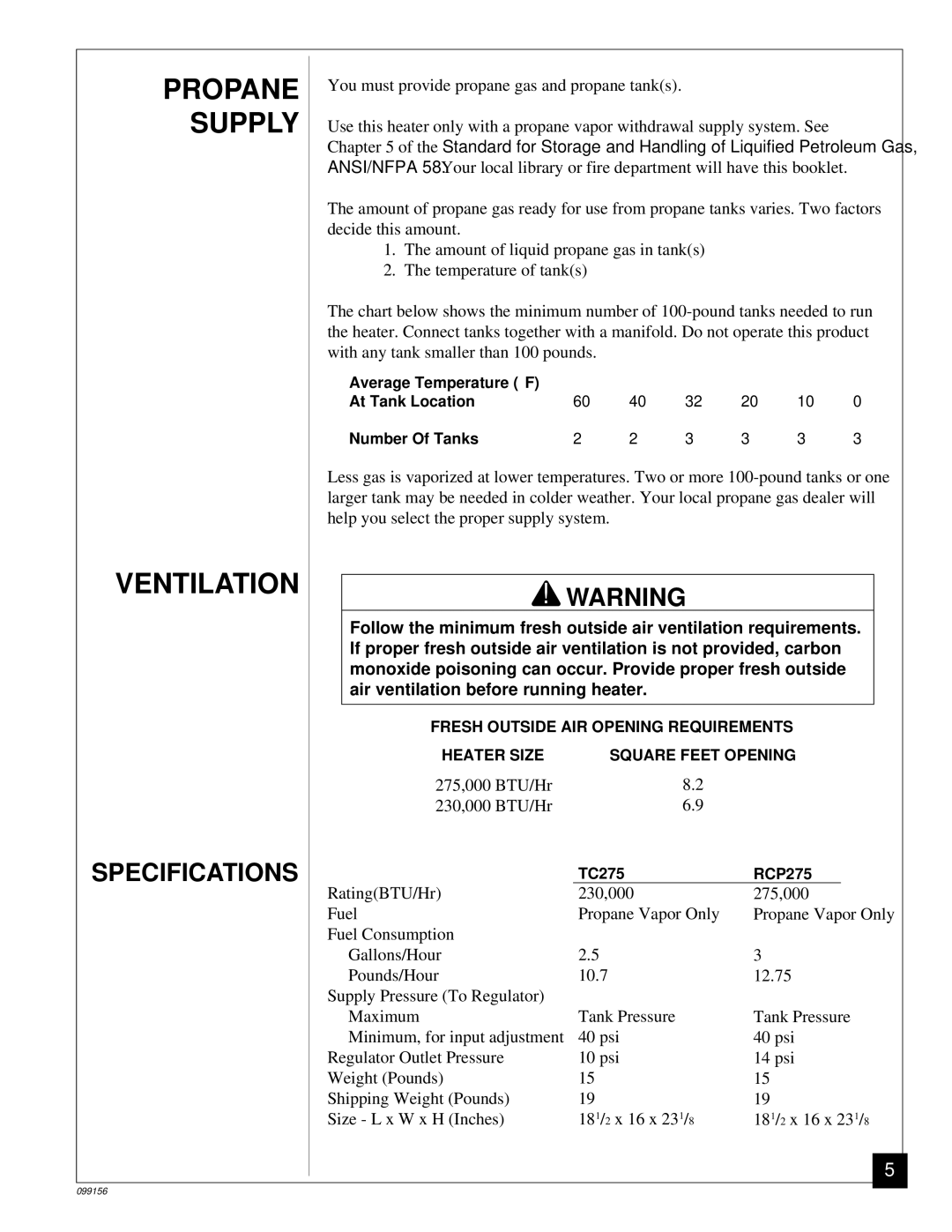RCP275, TC275 specifications
Desa TC275 and RCP275 are remarkable advancements in thermal comfort and energy efficiency, showcasing the latest technologies in heating and cooling systems. Designed for both residential and commercial applications, these models offer innovative features that cater to modern demands for climate control, sustainability, and user-friendly operation.The Desa TC275 is a powerful, high-efficiency gas-fired heater that provides consistent warmth even in the coldest weather conditions. With its adjustable thermostat, users can easily set their preferred temperature, ensuring optimal comfort at all times. The TC275 incorporates advanced technology that enhances safety, including an automatic shut-off feature and a robust flame-proof safety guard. These elements not only promote peace of mind but also extend the lifespan of the unit.
Meanwhile, the RCP275 model serves as an energy-efficient reverse cycle air conditioning unit, designed to deliver both heating and cooling. This dual functionality makes it a versatile choice for year-round climate control. Equipped with a high Seasonal Energy Efficiency Ratio (SEER), the RCP275 maximizes energy use, translating to lower utility bills. Its inverter technology further optimizes energy consumption by adjusting the compressor speed according to the indoor climate needs.
Both the TC275 and RCP275 boast user-friendly interfaces, enabling seamless operation. The intuitive control systems allow users to program schedules, adjust settings, and monitor performance, all from a central dashboard. Additionally, these units are designed with quiet operation in mind, ensuring that noise does not interfere with daily activities or sleep.
Another key characteristic is the environmentally conscious design. The Desa TC275 employs low-emission technology, which minimizes its carbon footprint, aligning with global trends toward sustainability. Similarly, the RCP275 utilizes eco-friendly refrigerants that contribute to a healthier environment.
In summary, Desa TC275 and RCP275 are exemplary models of modern heating and cooling technologies. Their combination of efficiency, safety, and user-centric features makes them ideal choices for anyone looking to enhance their indoor comfort while being mindful of energy consumption and environmental impact. As these units continue to evolve, they set a benchmark for the future of climate control solutions.

